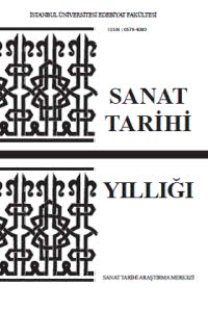GAZİANTEP ARKEOLOJİ MÜZESİ’NDE BULUNAN YAYIMLANMAMIŞ KURŞUN MÜHÜRLERDEN BİR SEÇKİ: DEVLET GÖREVLİLERİ TARAFINDAN DARP EDİLMİŞ OLANLAR
Fırat nehrinin batı kıyısında, Samsat’a yakın stratejik bir noktada bulunan Gaziantep şehri ticaret yolları bakımından da önemli bir noktada yer almaktadır. Müze’de yaklaşık olarak 120 mühür bulunmaktadır 1 Mühür sahipleri arasında doğru - dan merkezi idareye bağlı olanlar ile bölgesel sivil yöneticiler, askeri yöneticiler, din adamları ve özel kişilere ait mühür örneklerine de sıklıkla rastlanmaktadır. Bu makalede sadece merkeze bağlı devlet görevlilerine bağlı olan mühürlerden bir seçki sunulması amaçlanmıştır. Bu örnekler günümüze kadar çıkmış yayınlarda özellikle paralellerine az rastlananlar arasından seçilmiştir. Mühürlerin, grekçe büyük harf yazıları Athena yazı karakterinde, küçük harfler ise Grekçe Unicode karakteriyle yazılmıştır. Katalog düzeninin bir satırı da mühür için önerilen tarihe ayrılmıştır. Bunun sonrasında katalog obverse (obv.: ön yüz), reverse (rev.:arka yüz) olarak verilmektedir. Bilinenin tekrarından kaçınılması amacıyla grekçe ki - tabelerin İngilizceye çevrimi bir çok uluslararası yayında da olduğu gibi gözardı edilmiştir, ancak unvan ve görevler için dipnotlar eklenmiştir. Yapılan çalışmalarda eserlerin buluntu yerleri tüm Anadolu müzelerinde olduğu gibi genel olarak belli değildir. Buluntu yeri belli olan bir grup (1.6.92’den 10.6.92’ye dek olan toplam 10 mühür) aynı boulloterion ile basılmış olmalıdır. Bu grubun buluntu yeri olarak müzeye sıklıkla eser getirilen nekropolis alanı olan Kurtini olması burada bir özel arşivin bulunması olasılığını akla getirdiği için ilgi çekicidir.
A SELECTION OF UNPUBLISHED LEAD SEALS FROM THE GAZIANTEP ARCHEOLOGICAL MUSEUM: SEALS ISSUED BY STATE OFFICIALS
Gaziantep had a permanent role in trade routes, its proximity to Samasota and setting on the west of Euphrates was also played an important role. Gaziantep Archeological Museum has 120 seals, including the seals belong to state officials, provincial and military officials, ecclesiastical seals and anonymous seals. In the presentation of the seals we used Athena font for capital letters and Greek Unicode in small letters. Besides, a line in the catalogue dedicated to the proposed date for the seal. Since we avoid to repeat the well known fact we avoid to translate the Greek insciption into English, but instead we put a footnotes for the titles and dignities. Unfortunately, as always the case in Anatolian museums we do not have any answer for the finding places of the seals, since most of them bought or con-fiscated by the museum is also applicable for Gaziantep Museum. Only we have an idea the inventory numbers (1.6.92 to 10.6.92) most probably struck with the same boulleterion. According to the museum records these seals came from the necropolis area known as Kurtini and one may consider the existence of a private archive in the same spot.
___
- Cheynet, J.Cl., “Sceaux byzantins des musees d’Antioche et Tarse”, Travaux et Memoirs , 12, 1994, pp. 391-478.
- Cheynet, J.Cl., “Les sceaux byzantins du musee de Manisa”, Revue des Etudes Byzantines , 56, 1998, pp. 261-267.
- Cheynet, J.Cl., “Les sceaux de a collection Khoury”, Revue de Numismatique , 159, 2003, pp. 419-456.
- Cheynet, J.Cl. – D. Theodoridis, Sceaux Byzantins De La Collection D. Theodoridis, Les sceaux patronymiques , CNRS, Monographies 33, Paris, 2010.
- Cheynet, J.Cl. – E. Erdoğan – V. Prigent, “Les Sceaux Byzantins du Musee d’Adıyaman”, Studies in Byzantine Sigillography , 12, (Ed. J.Cl. Cheynet and C. Sode), De Gruyter, 2016, pp. 93-140.
- Cheynet, J.Cl. – E. Erdoğan – V. Prigent, “Sceaux des Musees de la Turquie Orientale: Karaman, Nevsehir, Malatya, Maras”, Revue des Etudes Byzantines , 74, 2016, pp. 287- 326.
- Cheynet, J.Cl. – M. Campagnolo-Pothiou, Sceaux de la Collection George Zacos au Museee d’Art et d’Historie de Geneve , Milan, 2016.
- Grünbart, M., “Die Familie Apokapes im Lichte neuer Quellen”, Studies in Byzantine Sigillography 5, 1998, pp. 29-42.
- Jordanov, I., Corpus of Byzantine Seals From Bulgaria , Volumes 1-3, Sofia, 2003.
- Konstantinopoulos, K.M., Byzantiaka Molydouboulla tou en Athenais Ethnikou Nomismatikou Mouseiou , Athens, 1917.
- Michael Attaleiates, The History , translated by Anthony Kaldelis and Dimitris Krallis, Dumbarton Oaks Medieval Library 16, 2012.
- Münz-Zentrum, Auktion 68 , (25-27 April 1990).
- Polemis, D.I., The Doukai: A Contribution to Byzantine Prosopography , Athlone, California, 1968.
- The Alexiad of Anna Komnena, translated by E.R.A Sewter, Penguin Books, London, 1969.
- Seibt, W., Die Byzantinischen Bleisiegel in Ö sterreich , Teil.1, Vienna, 1978.
- Seibt, W. – M.L. Zarnitz, Das Byzantinische Bleisiegel als Kunstwerk , Vienna, 1997.
- Sode, C., Byzantinische Bleisiegel in Berlin , II, Bonn, 1997.
- Wassiliou, A.K. – W. Seibt, Die byzantinischen Bleisiegel in Österreich, 2, Zentral-und Provinzialverwaltung , Österreichische Akademie der Wissenschaften, Vienna, 2004.
- Wassiliou, A.K., “Siegel in Kopie und Falschung”, Kopie und Falschung , Ed. by Christian Gastgeber, Graz, 2001, pp.125-152.
- http://doaks.org/resources/seals (Online Catalogue of Byzantine Seals from Dumbarton Oaks Collection) 15.12.2017.
- http://blog.pbw.cch.kcl.ac.uk/contact/ (Prosopography of the Byzantine World) 20.01.2018.
- http://www.metropolitan.org/art/collection/search/466046 (11.12.2016).
- http://www.perseus.tufts.edu/hopper/
- ISSN: 0579-4080
- Yayın Aralığı: 1
- Başlangıç: 1964
- Yayıncı: İstanbul Üniversitesi
Sayıdaki Diğer Makaleler
NİKSAR MELİK DANİŞMEND GAZİ TÜRBESİ HAZİRESİ’NDE TESPİT EDİLEN SIRLI TUĞLA ŞAHİDE
17. YÜZYIL’DA AVRUPA GÖRSEL SANAT ESERLERİNİN İRAN’IN GELENEKSEL RESMİNE ETKİSİ
ONARIMIN TARİHİ GÖRSELLERDEN OKUNMASI: BURSA ORHAN CAMİSİ ÖRNEĞİ
ARKEOLOJİ DELİKANLISINI YİTİRDİ: A. MUHİBBE DARGA (1921 - 2018)
